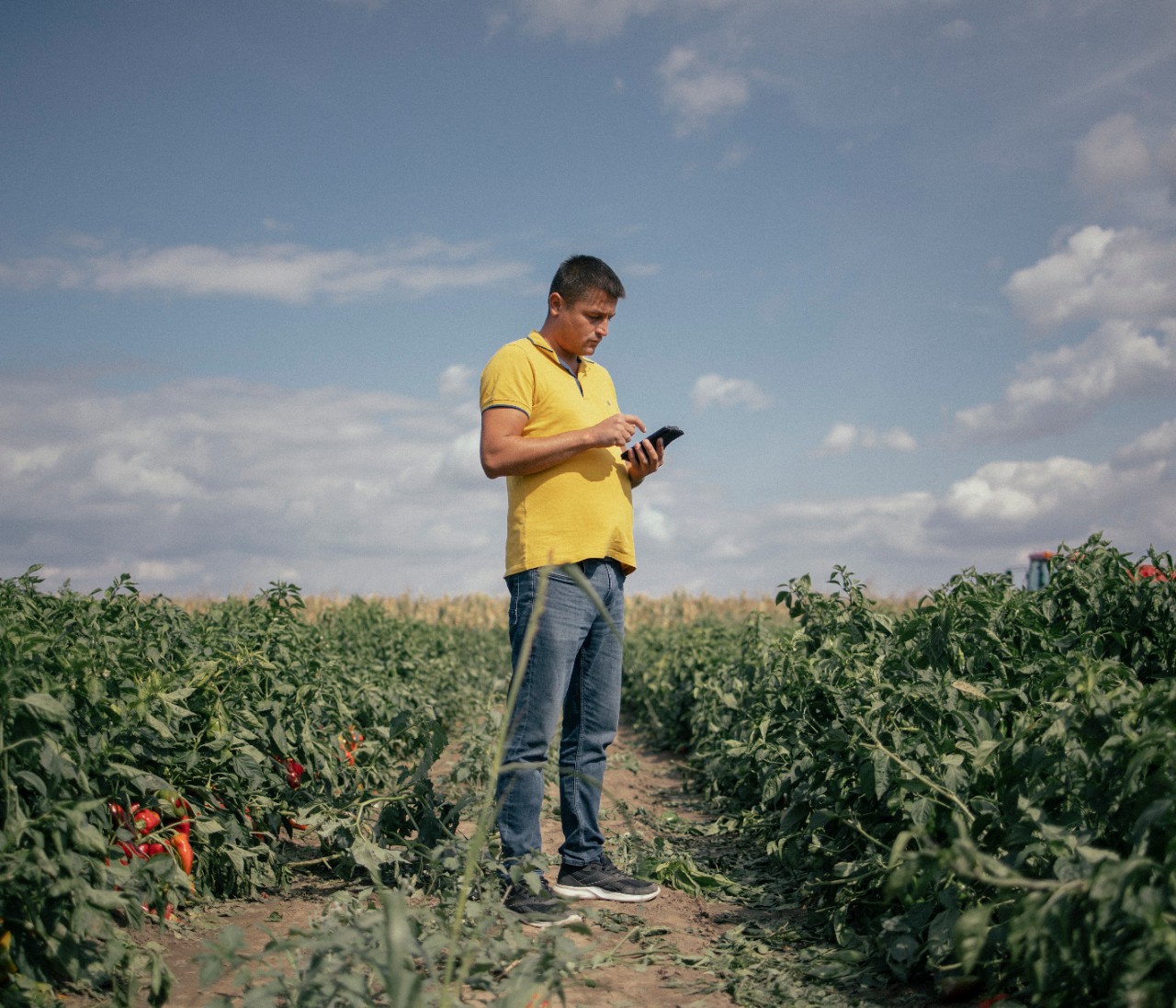-
Jan 10 2022 How the First Digitized Farm in Serbia Increased Yield Despite Drought
Outside the village of Belegiš, a dusty road across dry, cracked land, surrounded by dried maize fields, leads to a green oasis on the field crop farm of Nikola Lončar. This farmer, born and raised in Belegiš, is the first one in Serbia to embark on the adventure of digitizing the fields where he grows vegetables for sale. One of the reasons for pioneering this approach in Serbian agriculture is the high risk brought on by droughts in recent years.
The scale of the risk is witnessed by the fact that in 2021 Serbia broke a dismal record for high temperatures by recording the hottest month of June in the past 100 years.
– It has been increasingly unstable in the past five or six years, or even longer. The climate is changing year after year. Rainfall is irregular. It is too high in the spring, and non-existent in the summer when it is needed most. During my time as a farmer, we never had total damage to crops like we did four years ago – explains Nikola.
It was in that same year that Nikola made contact with experts from Mihajlo Pupin Institute of Belgrade, from whom he procured the smart device Mobisan – a mobile solar power generator. Mobisan was developed by a multidisciplinary team of engineers and crop scientists, specifically for small and medium-sized family farms, since over 95 percent of Serbia’s registered farms have under 10 hectares of land.
– The device is a combination of sensor and computer networks. It includes sensors in the soil, a digital weather station and a computer system that wirelessly collects information about microclimate and soil. On the basis of the information collected, it automatically irrigates the field and adds fertilizer, or transfers the information to Nikola through a mobile app, so that Nikola could adjust water and nutrient dosage for the plants. Mobisan can be operated remotely and is designed to streamline the use of natural resources. It supplies the soil with no more and no less than what is needed, but just the right amount. This enables financial savings and also protects the soil from excess chemicals – explains Aleksandar Rodić, head of the Robotics Laboratory at Mihajlo Pupin Institute.
This year, Nikola had 20 hectares of land under maize, 10 under wheat, and more than 4 under vegetables. He successfully grew two field crops on the same field by irrigating them throughout the six-month growing season. He notes that the current system enables yield stability, which is a key prerequisite for contracting vegetable sales to large retailers.
– Early in the year, I plant vegetables for known buyers. I negotiate quantities for specific buyers already in the winter and spring. Without stable yield, I cannot fulfil the contract, and then I am subject to penalties.
Thanks to the fact that Mobisan is powered by sun and wind, Nikola no longer uses diesel fuel, thus saving money and protecting the environment from pollution. For a 10-hectare field, replacing a diesel generator with a solar one saves 3,375 euros per season in fuel, as well as 6,750 kg in CO2 emissions. In addition, the yield has been increased by as much as 30 percent. The total pepper yield per season now amounts to 10 wagonloads.
– I save time, as I do not need to go to the field all the time to open and close valves – the device does all of it. The system tells me how much fertilizer and nutrients to add, how much to irrigate and for how long. I save electricity and water and preserve the soil. After we installed this system, I took my first real vacation, as it all functioned well without me. I operated the device from the beach in Greece – says farmer Nikola.
The investment in a 10-hectare digital field pays off in three years.
– For Serbian agriculture, mobility combined with renewable energy sources is the way to go. Besides the scientific and professional challenge, we were guided by the ethical motive to help Nikola, as a representative example of those 95 percent of family farms, because more than a million people in Serbia make a living by farming. The solution is not to merely give them subsidies; it is also necessary to teach them and give them the technology to be successful – stresses Aleksandar.
Technological innovation in agriculture enables adapting to the changing climate, while at the same time contributing to greenhouse gas (GHG) emission reduction.
***
Mihajlo Pupin Institute’s “Development of Innovative Solutions in the Area of Smart Land Management in Agriculture” was selected as one of the 11 best innovative and climate-smart solutions within the “Climate Smart Urban Development” project, implemented by the United Nations Development Programme (UNDP) in partnership with the Ministry of Environmental Protection, with financial support from the Global Environment Facility (GEF).

